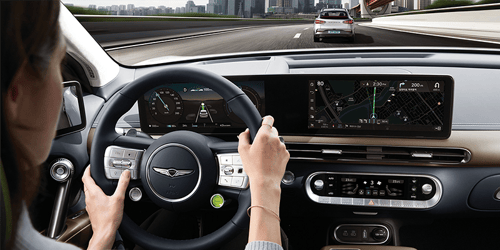Digia Previews QML for Pixel-Perfect Prototype Production
September 20, 2010 by Adam Walhout | Comments
As the momentum to create fresh UI styles with intuitive transition effects and develop new application concepts continues, pre-releases of the Qt Quick high-level user interface technology have been used by companies like Helsinki-headquartered Digia to rapidly prototype new interface concepts that will encourage mobile and embedded device manufacturers to follow the latest development innovations.
Qt Quick (Qt User Interface Creation Kit) is an appealing proposition to software designers and developers who have a base-level grasp of scripting skills and want to build UIs and lightweight, touch-enabled applications without the need to acquire C++ skills. The first two components of the Qt Quick solution – the QML language and Qt Declarative module in the Qt library – will be released with Qt 4.7. The tooling components that complete the Qt Quick solution will arrive inside Qt Creator 2.1 later this year.
Breaking the mould
Digia is using Qt Quick to mould the next generation of user interfaces in its enterprise and mobile solutions after already building up a good level of its own in-house Qt development experience. Recognizing Qt’s development efficiencies and inherent cross-platform support, Digia has used Qt Quick to create visually impressive application UI prototypes using a combination of both Windows and Linux development tools to suit its own in house team’s preferences.
One of the Digia projects has been a UI concept for a connected infotainment experience for modern connected cars. As a fusion of entertainment, navigation and Internet connectivity, it provides a powerful Qt Quick baseline concept for other types of application areas as well. The concept provides solid evidence on the visual and productivity benefits of Qt Quick.
To help the ecosystem to embrace Qt Quick, Digia and Nokia will provide the application as an open source sample during the 4th quarter 2010.
Digia’s project has been developed on:
- Maemo (N900)
- Windows XP (Asus EEPC)
- Embedded Linux (TI OMAP Beagle board with Ångström Linux)
Qt Quick: learning ‘on-the-job’
With a degree of Qt experience already existing in house, Digia’s development team learned Qt Quick on-the-job by studying working examples and documentation prior to its own implementation. The company is pushing Qt Quick outwards and is building its own bespoke training course to further benefit its own teams and to help engage customers with the tool.
Although Qt Quick is essentially still a new and emergent element of the total Qt development framework, Digia faced comparatively few problems developing prototype UIs, which it hopes to target at multiple mobile platform manufacturers whose devices will support multiple use-case scenarios from location-based services to telephony to games and music.
Bringing designers inward to be part of the UI development process by using Qt Quick technology, companies like Digia are finding that the ability to unify the development teams’ efforts inside a single environment helps to create an iterative organic work model that together, produces amazing results faster than thought possible.
Blog Topics:
Comments
Subscribe to our newsletter
Subscribe Newsletter
Try Qt 6.10 Now!
Download the latest release here: www.qt.io/download.
Qt 6.10 is now available, with new features and improvements for application developers and device creators.
We're Hiring
Check out all our open positions here and follow us on Instagram to see what it's like to be #QtPeople.


